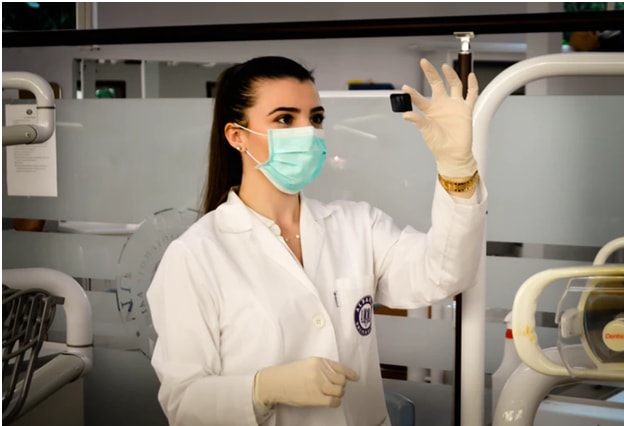Vacancies for midwives and nurses surged by more than 20 percent by the end of 2017 compared to 2015. According to reports, over 133,000 vacant posts were advertised in the said year.
Coincidentally, the number of job applications sent dropped by around 12 percent in the last quarters of 2017 and 2015, suggesting that the NHS has become desperate to recruit new medical staff.
In the span of nine years, the number of midwives and nurses on the British soil has barely changed. Statistics from NHS reveal that there were more than 338,000 and 345,000 nurses and midwives in the UK in 2009 and 2018 respectively.
The staff shortage prompted the UK government to find other ways to fill the vacancies and satisfy the public demand. Reports reveal that staff shortage cost the government more than £2.4 billion to pay for nursing agencies who hire temporary staff. Additionally, they throw in a lot of money to advertise the available vacancies in the UK.
A smaller number of Shortlisted Applicants
Aside from the dwindling number of nursing and midwifery applicants in the UK, there is also a significant decrease in the number of shortlisted applicants.
According to NHS reports, during the last quarter of 2015, they shortlisted more than 42,000 applicants. However, during the last quarter of 2017, the numbers dropped dramatically to below 22,360.
This goes to show that applicants nowadays barely satisfy the requirements imposed by the NHS.
Janet Davies, the Royal College of Nursing’s General Secretary and Chief Executive expressed her disappointment and concerns about the current nursing and midwifery shortage in Great Britain.
She said in an interview that the advertisements barely cover all the nursing and midwifery positions available. Even the nurses in the country repeatedly say to patients that there isn’t enough staff to provide medical care.
Number of university students enrolling in nursing also decreasing
On top of the issues enumerated above, UK university students are also less inclined to take up nursing and midwifery because of the recent decision of the government to completely cut the bursaries provided to aspiring nurses and midwives.
Due to the new regulations and the current shortage situation, the UK has seen a steep and alarming decline in the number of enrollees for nursing and midwifery courses.

Without financial aid, students who wish to get a nursing or midwifery degree in the UK need to pay up to £9,250 a year for their tuition fee alone. They will also need to spend thousands more on other school-related expenses such as books, lab coats, scrubs, compulsory field classes, placements expenses, and professional association fees.
Students who come from families earning an average income of £27,300 find it extremely difficult to attend the university to acquire a nursing or midwifery diploma. And even though they have the option to avail student loan options, they still end up pursuing other courses that can fit their budget and personal preferences.
If the shortage issue continues to prosper, the country may become highly dependent on nursing agencies. In effect, the UK government may need to spend more and more money just to fill in the gaps.
Too many tired medical staff
Because a lot of hospitals are short on staff, their available medical workers need to work extra just to fill in the demand. The latest numbers reveal that NHS nurses and midwives need to work on 12-hour shifts.
However, in most cases, these shifts extend up to two hours in order to provide care for the patients coming in.
Because of the demanding work hours, existing hospital staff becomes tired and overworked. They end up resigning from their posts, further adding to the growing problem.

Poor medical care is given to patients
As a result of the situation of hospitals in the UK, the quality of patient care has also declined.
According to NHS, nurses in the UK attend to 1 million patients in a span of 36 hours. Given the current number of employed nurses and midwives, the patient to staff ratio in the country is set at 1:8, a far cry from the ideal ratio of 1:2 in critical care and 1:4 in emergency wards.
In a survey conducted by the NHS, 80 percent of the respondents have raised their growing concerns about staff shortage.
Almost 60 percent of these respondents also said that despite raising their concerns to the authorities, no action was ever taken.
Furthermore, almost half of the survey respondents said that patient care tends to get compromised during the last shifts and that due to the situation, they can’t provide a high level of care to their patients deserve.

High-time to solve the problem
The UK’s problem on nursing and midwifery shortage needs immediate attention. There may be ways you can become part of the solution.
For starters, if you are a graduate of nursing or midwifery, start ppracticingyour profession. Make sure you’re duly registered with the National Nursing and Midwifery Council so you can legally work in any UK country.
If you have been inactive for more than three years, you need to revalidate your membership. Follow the procedure and guidelines provided by the NMC in their website. You will find an in-depth instruction on how you can apply for revalidation and what requirements you need to complete.
Because employers are quite finicky in choosing nurses and midwife applicants, we suggest taking the necessary specialization training and courses. Aim to satisfy the qualification requirements of the regulating authorities so you can land a suitable job.
It doesn’t matter where you’re from
Whether you live in the UK, within the EU/EEA states or in other countries, there is surely a job posting that will fit your current needs and demands. To find details of vacancies in your target UK city, you can browse employment portals such as Nurses.
Take note to include the postal code of your target location and specific keywords pertaining to the job. For example, you should include key phrases like RMN nurses if you’re a qualified mental health nurse or paediatric nurse if you mostly attend to young patients.
You must also pay attention to the requirements in working as a midwife or nurse in the UK.
Whilst the UK opens its arms to many foreign countries, there are some overseas nurses and midwives that aren’t permitted in the UK. Workers from such countries are not advised to work in the UK to prevent brain drain in their homeland. For more information, you can read through the NMC regulations for overseas medical workers.
If your country is not included in the list, you can proceed to apply for an NMC registration. Here are some of the requirements if you don’t reside in the UK:
- Take the required tests of competence.
- Submit the required documents to prove your identify and work qualifications.
- Present your IELTS results. Take note you must score at least 4 to qualify for a work visa.
- Pay the required fees amounting to £1415 for the application fee, test of competence and registration admission.
After taking the tests and submitting the requirements, the NMC will process your application. If you pass, you will receive an email containing instruction on how you can proceed.
Only then can you start applying for a job in the UK. If you’re not NMC registered, you can’t practice your profession. Take note that you will be incarcerated and fined heavily if you work in the country without permission from the NMC.
If in case you stopped working for as a nurse or midwife in the UK for a few years, you need to revalidate your NMC certification.
The current medical situation in the country is indeed depressing. However, there may be certain ways you can contribute to resolving the issue. Hopefully, the government also start to implement the required changes to start turning things around.



